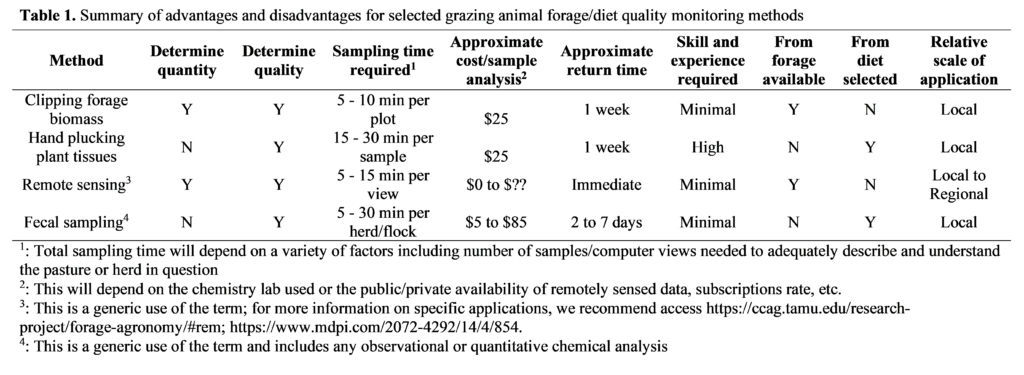
If your management objectives include obtaining knowledge of what your animals are selecting from the forage available on your operation, and how your management is providing for their nutritional needs in real time, then a monitoring method that accounts for individual animal selectivity in a specific time and place is called for. Hand plucking will provide that information if you have the time and experience.
Alternatively, a manager can let the animals inform this process by collecting fecal samples. Fecal chemistry is related to diet chemistry (Figure 1). Fecal samples can be collected in concert with other routine farm/ranch chores such as putting out feed or minerals.

*Please contact us at the Gan Lab for more information concerning sampling strategies and contract structure.
